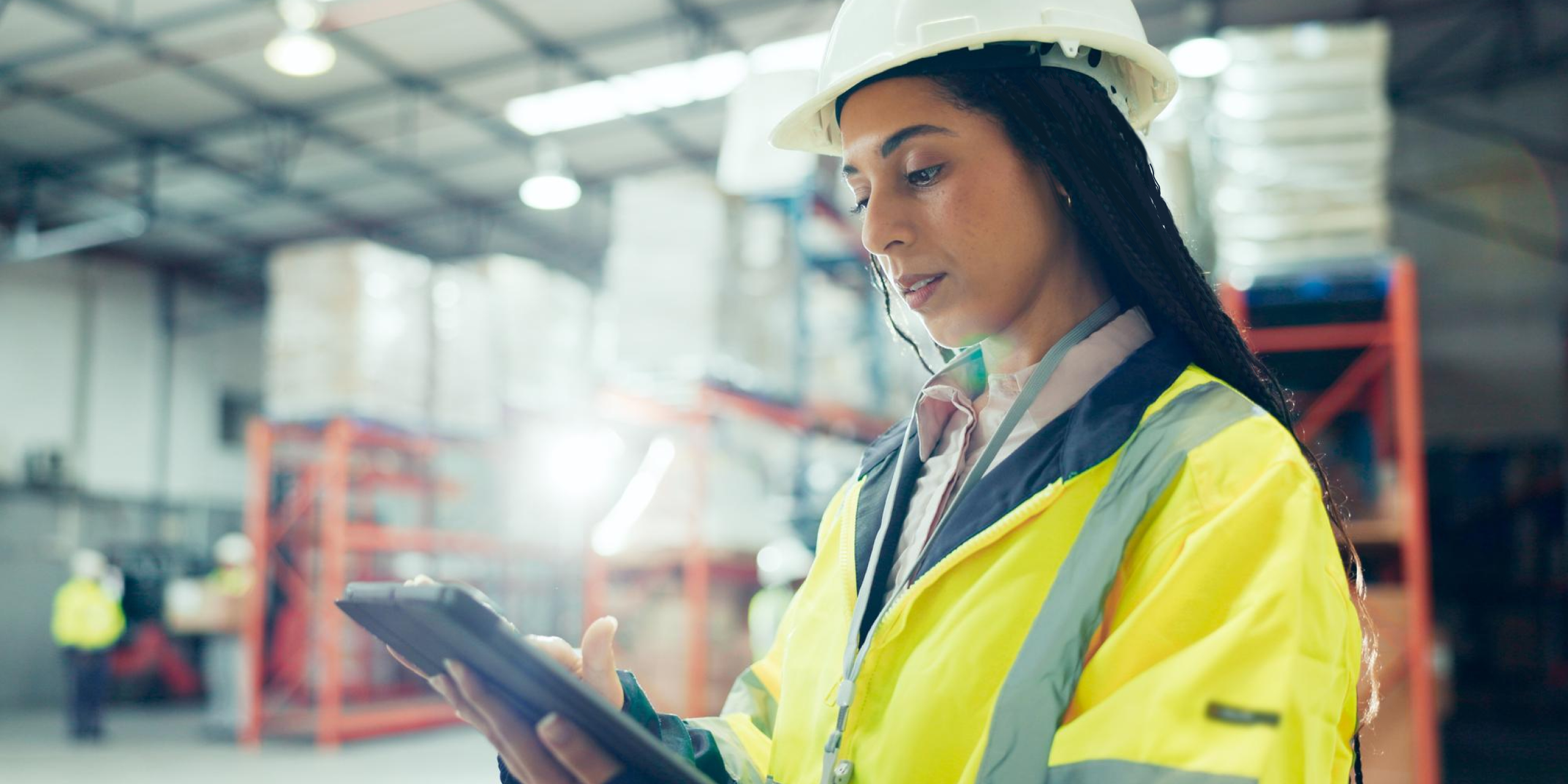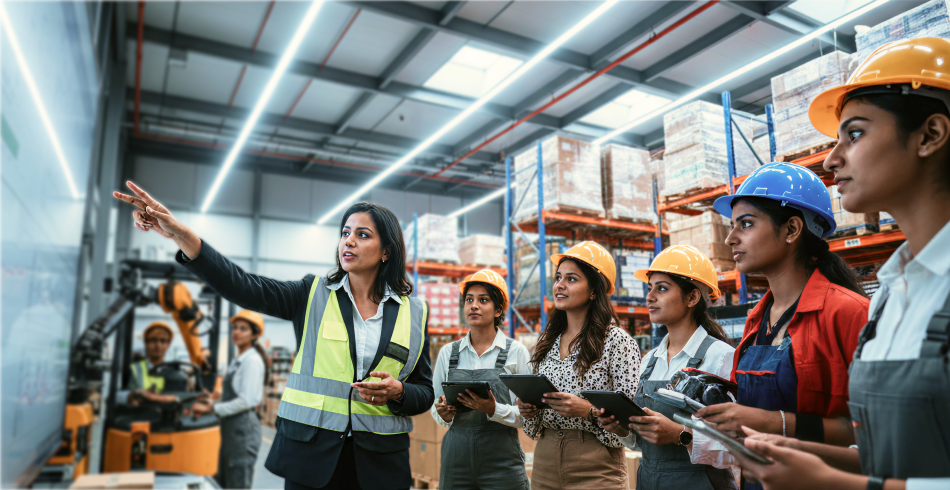The Next Frontier of Efficiency: Championing Women in Indian Warehousing for a Sustainable Future

The beating heart of India’s supply chain is neither steel nor wheels – it’s people. As warehouses grow more high-tech, sprawling, and complex, the question of who works inside them is gaining central importance. Industrial spaces are no longer just about machines and storage racks; they are sites where social transformation can, and must unfold.
For decades, the image of the Indian warehouse was one of overwhelming masculinity, a perception driven by manual labour and a lack of dedicated infrastructure. Frontline operational roles – from forklift operators to loading supervisors – were rarely open to women. Yet, despite the growth of this sector, women remained dramatically underrepresented.
But, there has been a paradigm shift and this narrative is undergoing a crucial and necessary transformation. The move towards an inclusive industrial workforce is no longer a peripheral HR initiative; it is a core business mandate, driven by commercial efficiency, social responsibility, and global sustainability goals.
The question is no longer if women should be in the warehouse, but how rapidly the industry can redesign itself to tap into this immense, high-performing talent pool. This shift is more than mere symbolism; it’s a strategic unlocking of efficiency.
The State of Play: A Sobering Look at the Numbers
While the visibility of women in Indian warehousing is increasing, the overall numbers highlight the deep-seated gender gap that still exists:
- In NSE-listed logistics companies, women make up only 7% of the workforce.
- Only 44% of these firms have any woman in a Key Management Position (KMP).
- Some companies with relatively strong women representation include AllCargo Logistics (19 %), TCI Express (13 %), Mahindra Logistics (11 %) – yet these are still the exceptions, not the norm.
- Horizon Industrial Parks is also actively taking the lead to make the workplace a more diverse and inclusive space with 18% women participation.
- More broadly, India’s female labour force participation (FLFP) is low: in surveys, only about 37 % of women are active in the workforce.
- In “non-traditional” sectors (like logistics, within high-growth industries), women’s share has hovered at ~8 % (2020 baseline) and has potential to expand.
These numbers reflect entrenched structural, social, and infrastructural barriers. But they also point to enormous untapped potential.
The Unassailable Business Case for Gender Diversity
The argument for increasing gender diversity in logistics has moved from a moral obligation to a measurable competitive advantage. Data from on-ground operations provides compelling proof:
- Reduced Attrition and Enhanced Stability: Women employees demonstrate superior retention rates. Studies show that female employees in the warehouse and dark store environment had a 6% lower attrition rate than men, and notably, took significantly fewer unplanned leaves. This stability directly impacts operational continuity and reduces the cost of constant rehiring and training.
- Superior Quality and Precision: Women-led teams often excel in tasks requiring attention to detail, such as sorting, grading, and packaging. One major e-commerce player’s pilot found that complaints raised against orders handled by women were ~16% less than those handled by men, particularly in perishable goods.
- Cost Efficiency: The accumulated performance benefits – higher attendance, better retention, and superior output quality – have been shown to contribute to measurable cost savings, with estimates ranging up to 12% of per-worker cost in some warehouse operations.
- A Better Work Culture: The presence of women introduces a tangible layer of discipline and professionalism, leading to improved communication, reduced altercations, and a higher standard of cleanliness and hygiene across the facility.
Beyond Profit: Diversity as an ESG Mandate
- Business Performance & Resilience
Diversity is not just “nice to have”; it is a strategic lever. Multiple studies show that companies with stronger diversity, equity, and inclusion (DEI) metrics tend to outperform peers in ESG measures, often manifesting in stronger social and environmental impact. In India, corporate ESG frameworks increasingly incorporate DEI as a core social pillar. DEI performance strengthens a company’s social responsibility credentials and can positively impact investor sentiment. - Social Justice, Dignity & Equity
At its core, this is about social equity. Warehousing roles, often located in semi-urban and peri-urban areas, can offer women a pathway to economic independence, career progression, and social mobility.In many regions, choices for women are often constrained – be it due to lack of local opportunities, social norms, or mobility barriers. When industrial employers open pathways, they signal that these jobs are for everyone, shifting mindsets in families and communities alike. - Alignment with United Nations Sustainable Development Goals (UNSDGs)This agenda aligns strongly with:
-
- SDG 5: Gender Equality – promoting women’s full participation in economic life.
- SDG 8: Decent Work & Economic Growth – ensuring inclusive, safe, sustainable workplaces.
- SDG 10: Reduced Inequalities – addressing gaps in representation and opportunity.
- SDG 9: Industry, Innovation & Infrastructure – making industrial growth inclusive.
When an industrial park or logistics company integrates women meaningfully, it becomes a microcosm of sustainable development in action.
-
The Path Forward: From Policy to Practice
The challenge is not one of women’s capability, but of the ecosystem’s capacity to support them. Companies must move beyond tokenism and embrace systemic change:
-
- “De-Genderisation” of Roles: Modern automation, robotics, and advanced material handling equipment have eliminated the need for heavy manual lifting, effectively de-genderising almost all operational roles. Companies must invest in skilling programs to train women as drivers, forklift operators, inventory managers, and supervisory staff.
- Infrastructure and Safety (The Non-Negotiables): Safe, clean, and segregated sanitation facilities are foundational. Companies must also ensure secure transport to and from facilities, especially for late shifts, and enforce robust anti-harassment policies with clear, confidential reporting mechanisms.
- Inclusion at the Leadership Level: True change requires role models. Actively promoting and hiring women into leadership and senior management positions creates pathways and signals commitment to the entire workforce.
- Flexibility and Support: Recognizing the unique societal and familial roles of women in India, offering flexible work arrangements, on-site creche facilities (a statutory requirement for establishments with 50+ employees), and supportive parental leave policies is critical for long-term retention.

What This Means for Industry & Society
When women are genuinely included in warehousing and logistics:
- The industry becomes more resilient – less vulnerable to sudden labour shortages.
- Productivity and quality improve through diversified perspectives.
- Entire communities gain women’s earnings fuel household investments in health, education, and community development.
- India fortifies its claim to be a truly inclusive global supply chain hub with social equity interwoven into growth.
Conclusion: Building the Resilient Supply Chain
As India solidifies its position as a global manufacturing and logistics powerhouse, the industry cannot afford to sideline half its potential talent. The path to a robust logistics sector by 2025 demands a workforce that is diverse, stable, and highly skilled.
By intentionally prioritising women in warehousing and embedding the principles of diversity, equity, and inclusion into every layer of operation and infrastructure, the industry can build a supply chain that is not only robust and hyper-efficient but also socially responsible – a true reflection of a nation’s commitment to equitable growth.
This is the imperative for every logistics operator and industrial park developer today. The future of the Indian supply chain is female, and the foundation is being laid on the warehouse floor.